Every NFL Sunday has a few weird, unexpected moments or performances pop up amid the slate. From what I saw, Week 7 had more than the usual bunch. There were fullback option pitches and game plans rendered irrelevant by weather. The Dolphins nearly won. The Chargers found a new way to lose a close game. Both of those occurrences seem pretty strange.
So, after noticing weird tidbits and stories I wanted to write about throughout Sunday afternoon, I’m devoting today’s column to hitting the surprises and weird moments from Sunday’s action. These are in no particular order, but I’m going to start with an epic performance from a quarterback who didn’t expect to have much help on Sunday:
Jump to a wacky event from Week 7:
Russ’ pick-six | Rodgers goes off
Jones’ four TDs | Edmonds’ career day
Goff jukes a LB | Cousins is on fire
LAC loses late | The Dolphins lead!
All of SF-WSH | Successful onside kicks
![]()
For a minute there, it seemed like Rodgers was going to have the worst receiving corps of his career to face the Raiders. Green Bay was almost running out Jake Kumerow, Allen Lazard and Darrius Shepherd as Rodgers’s top three wideouts. Marquez Valdes-Scantling and Geronimo Allison were eventually deemed able to play after combining for one practice all week, but with both receivers limited and star Adams out, it looked plausible that the Packers would focus on the run at home against the Raiders.
2 Related
Rodgers hit everyone. He completed at least two passes to eight different receivers. Five receivers scored touchdowns, and Allison would have made it six if he hadn’t come up just short of the end zone. Rodgers picked on every single member of the Raiders’ secondary, even completing a pair of passes in which defensive end Benson Mayowa was nominally the closest defender in coverage.
Was Rodgers untouchably great in the way he seemed at times in years past? Honestly, no. He didn’t need to be. The phrase I would use is “in command.” He got rid of one pass to fullback Danny Vitale in 0.68 seconds, which is almost impossible to do for anything beyond a touch pass. He appeared to know where he was going before the ball was even snapped, play after play, and then delivered those passes in stride.
There were great throws, of course, although Rodgers’ best throw of the day might have been the pass Lazard dropped. The Packers went back to the same RB seam concept Aaron Jones dropped last week and hit the halfback for a 21-yard touchdown. Just before halftime, Rodgers took advantage of a coverage misstep to hit Kumerow for a 37-yard score. You might even argue that Rodgers slightly underthrew his longest completion of the day, the 59-yard completion to Valdes-Scantling, although he threw it in a place in which Valdes-Scantling was able to make an easy catch. Tony Romo joked that Rodgers had done this same thing with Jordy Nelson a thousand times before, and he’s not wrong.
The Raiders certainly helped. The secondary was terrible tackling at and around the line of scrimmage in this game, with Gareon Conley and Lamarcus Joyner as notably guilty parties. Rodgers had no trouble manipulating them with his eyes, which is how Erik Harris jumped an underneath crossing route to free up the Kumerow touchdown before halftime. Conley was the primary corner in coverage on the Valdes-Scantling bomb and actually had safety help in Karl Joseph, but Joseph fell for Valdes-Scantling selling the corner route before Rodgers threw the ball toward the other sideline. The Raiders actually did get some pressure, but Rodgers just didn’t have much trouble either knowing where to go with the football quickly or escaping it to make a play, one first-quarter sack aside.
By the second half, Raiders defensive coordinator Paul Guenther was getting desperate. Rodgers made him pay twice. On a first-and-10 inside Raiders territory, Guenther showed Rodgers a single-high safety look before the snap and crowded the line of scrimmage. After the snap, Gunther sent five men at Rodgers and rotated cornerback Daryl Worley (20) back to safety as part of a two-deep coverage while playing four intermediate zones underneath. This would probably give an inexperienced quarterback some pause. It didn’t bother Rodgers, who had his receivers running four verts and hit Lazard to set up another touchdown on the subsequent pass:
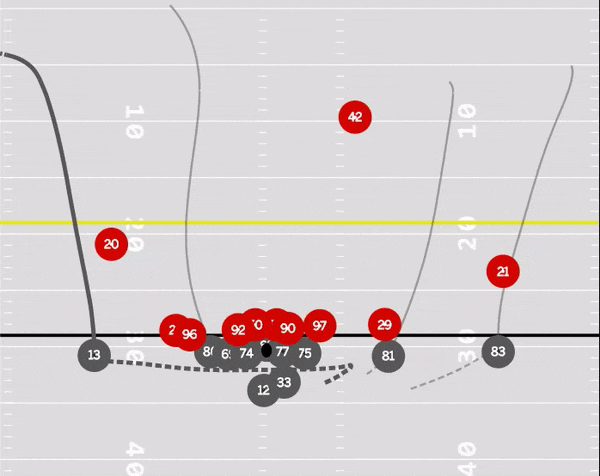
His final pass of the game, meanwhile, came when Guenther went all the way in the opposite direction. On a third-and-4, Guenther showed a single-high safety, but at the last second, he sent the house and played Cover Zero (no deep safety) with man coverage across the board. Rodgers had the ball out after 1.8 seconds, rendering the blitz totally useless, and hit Valdes-Scantling in the slot. Conley stumbled briefly coming out of his break and missed the tackle attempt on Valdes-Scantling, who turned upfield and ran in a straight line for a 74-yard score.
If the Packers can get this sort of passing attack going every week, the league is in a lot of trouble. They won’t get these sort of results every week because defenses will tackle better, get more pressure and won’t make as many mental mistakes, but it’s hardly out of the question to think Rodgers can play at this level.
After looking like he was battling Matt LaFleur’s offense at times to start the season, Rodgers looked on Sunday like he had been in this scheme for 10 years. That’s bad news for the Patrick Mahomes-less Chiefs, who will have to try to stop Rodgers next Sunday at Arrowhead.
![]()
The Chargers lose in dramatic fashion
Weird might be the wrong word to describe this, of course, because the Chargers make a habit of disasters. Even by their standards, though, they did not have a normal one. Trailing 23-13 to the Titans with 6:39 to go, Philip Rivers drove his offense 75 yards in four plays and hit Austin Ekeler for a 41-yard score to make it 23-20. After Mike Vrabel’s Titans failed to convert on a fourth-and-1 sneak from Ryan Tannehill, Rivers got back to work and hit Ekeler for a lead-taking touchdown, only for the halfback to be ruled down at the 1-yard line on replay.
Things got very weird from there. After the ball was re-spotted, Vrabel called a timeout, presumably thinking the Chargers would score and that he would try to get the ball back with as much time as possible. Guard Dan Feeney responded to the threat of a possible Chargers victory by committing a false start. The Titans, in kind, gave the Chargers their missing five yards back when Malcolm Butler committed pass interference on a fade to Mike Williams in the end zone.
0:41
Ryan Clark believes Philip Rivers has always been on the short end of the stick when it comes to winning meaningful games in the NFL.
On first down, Melvin Gordon tried to plow through the pile and was given Los Angeles’ second touchdown of the drive. Again, this was overturned on a review in which it appeared Gordon might have fumbled as he crossed the plane. On the next play, Gordon was stuffed and again appeared to fumble; this time, the review confirmed the fumble and gave the Titans an unlikely victory.
The (official) fumble was Gordon’s second of the game, and while the Chargers recovered the earlier one, this was another dismal stop on his comeback tour. The top Chargers back carried the ball 16 times for 32 yards and just two first downs, adding two catches for minus-3 yards. He caught a touchdown pass when left wide-open in the flat, but only after being stuffed on two carries inside the 5-yard line.
Since returning in Week 5, he has carried the ball 36 times for 81 yards. Among 47 qualifying backs, he ranks 46th in yards per carry (2.3), tied for 46th in first-down rate (5.6%), and tied for sixth in fumbles (two). He has turned nine catches on 14 targets into a total of just 34 yards, an average of less than 4 yards per reception. It’s difficult to be less productive than Gordon with this many touches.
His role has come at the expense of Ekeler, which hasn’t benefited this team. The Chargers’ offense stalled for most of this game until Ekeler took over as the team’s every-down back for the final two drives. He was on the field for each of the four snaps on the touchdown drive and the first six plays of the final drive. Ekeler alone made three catches for 76 yards on those drives, producing as many first downs as Gordon did over the entirety of the game.
The Chargers have run some snaps with Ekeler and Gordon on the field together, but the evidence suggests they’re better with Ekeler on the field and Gordon spotting him. Their running game has been a mess with any combination of backs on the field, but Rivers is averaging a full yard more per attempt and posting a passer rating nearly 20 points higher with Ekeler on the field as opposed to Gordon. The Chargers aren’t going to bench Gordon altogether, and Ekeler actually played 36 snaps to Gordon’s 31 on Sunday, but Gordon out-touched Ekeler 16 to 9 before those two desperate drives. Anthony Lynn’s offense might be more successful if they reversed that ratio.
![]()
The current favorite in the MVP race didn’t have a terrible game Sunday, but a Ravens pass defense that had been porous at times stifled him. Don Martindale’s defense allowed Wilson to complete just 48.8% of his passes, and while he has been grossly exceeding his expected completion percentage per NFL Next Gen Stats throughout the season, his expected completion percentage Sunday was only 50.9%. That’s the fourth-lowest expected completion percentage for any quarterback over the past two seasons.

Monday through Friday, host Mina Kimes brings you an inside look at the most interesting stories at ESPN, as told by the top reporters and insiders on the planet. Listen
Wilson’s worst moment of the game — if not the season — was an uncharacteristically ill-advised attempt to the sideline, which new Ravens cornerback Marcus Peters took to the house for a pick-six. For whatever foibles Peters has as a corner, he has always had the ability to come off his man to make a play on a pass thrown late to the sideline; he couldn’t have asked for a better introduction to his new teammates. The Ravens didn’t have many qualms about inserting their new addition into the lineup either, as he played 61 of 68 defensive snaps in Baltimore’s 30-16 victory in Seattle.
Wilson, on the other hand, doesn’t make these sort of mistakes often. This was just his fourth pick-six since entering the league in 2012 despite throwing nearly 3,500 passes. To put that in context, he is now tied in pick-sixes with the likes of Josh Rosen (502 attempts) and Christian Ponder (who last played in the NFL five years ago) and still well behind the likes of Geno Smith and Matt Cassel over that time frame. For a quarterback who improvises and throws late in plays, Wilson’s ability to avoid big mistakes on those throws is rare.
0:24
Russell Wilson throws his first interception of the season to Marcus Peters, who returns it 67 yards for a touchdown.
This was Wilson’s first interception of any kind this season. He hasn’t thrown two interceptions in a game since Week 1 of 2018, a streak that has now stretched to 23 games when you factor in the postseason, a league high. Sunday wasn’t his day, but Wilson is still the MVP favorite heading into the halfway mark.
![]()
If you started David Johnson in fantasy football with the Cardinals facing the Giants this week, you have my condolences. Johnson was active despite ankle and back injuries, but after playing on the first two offensive snaps of the game, he took one just one snap later on the drive before spending the rest of the day on the bench. Kliff Kingsbury said after the game that the Cardinals were only going to use Johnson in a “need-based” situation, which is strange given that Johnson was on the field for two of the first three offensive snaps of the day. It’s more likely that Johnson gave it a go and then realized he wasn’t able to play.
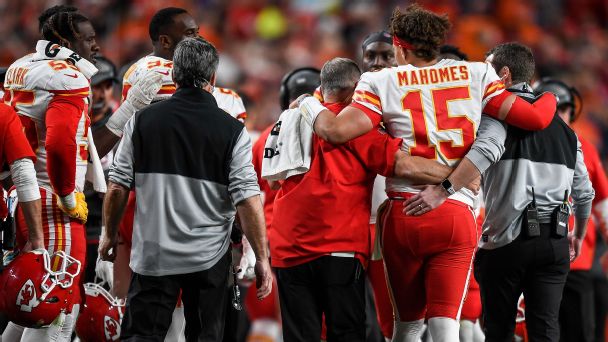
Instead, his backup, Edmonds, had his best game as a pro. The Fordham product caught two passes for 24 yards and carried the ball 27 times for 126 yards, six first downs and three touchdowns. Each of the three scores came from 20 or more yards out, which matches Johnson’s career total of rushing touchdowns from 20-plus yards out. The Giants aren’t great on defense, but they did rank 13th in rush defense DVOA before Sunday, so this blowup is certainly a little surprising.
Then again, maybe we shouldn’t have been surprised. While the perception before the season was that the Cardinals were going to be a fast-tempo, pass-happy attack in the Air Raid under Kingsbury, they rank fourth in the league in rush offense DVOA. Over the past three games, they rank second in rushing yards (524), tied for fourth in first downs (25) and second in expected points added (7.5) on the ground.
What makes Arizona so interesting, of course, is that it has built a dominant rushing attack in an offense whose most common offensive grouping through the first month of the year was 10 personnel, with one back, no tight end and four wideouts. In part because the Cardinals haven’t been trailing so frequently while also owing to injuries at wide receiver, they have gone to more 11 personnel and moved a tight end onto the field. Arizona ran four or more wideouts onto the field 64.2% of the time through the first four weeks of the season; over the past three games, that number is down to 16.4%.
The combination of Kingsbury and Cardinals offensive line coach Sean Kugler have also pieced together a versatile running game, playing off quarterback Kyler Murray’s unique talents. We saw glimpses of that running game over the first month of the season, as the Cardinals showed option looks and brought back the bash concept the Eagles periodically ran under Chip Kelly with a far more qualified quarterback in Murray.
In recent weeks, the running game has coalesced and grown more consistent. Murray has been effective both on designed runs and as a scrambler, where he has racked up 93 yards and five first downs over the past three weeks. Edmonds, too, has clearly carved out a bigger role for himself. Even before Sunday, he had run the ball 19 times for 132 yards and a touchdown over Arizona’s three prior games. Johnson’s numbers throughout the season haven’t been particularly impressive; even once he’s healthy, the Cardinals need to make Edmonds a more consistent part of their surprisingly impressive running game.
![]()
The Bears recover an onside kick!
The one bright spot for the Bears in a 36-25 thrashing at the hands of the Saints was special teams. Cordarrelle Patterson returned a kick 102 yards for a touchdown in the best use of the spider camera in NFL history. Later in the game, the Bears became the first team in the league to recover an onside kick this season. NFL teams were previously 0-for-16 on onside kick attempts, and the Bears nearly recovered a second, only to step out of bounds before recovering the ball.
Of course, the recovery did little more than help embattled Bears quarterback Mitchell Trubisky pad his stats. Through the first three quarters of Sunday’s game, the returning Trubisky was 14-of-27 for just 84 yards and four first downs. With the Bears mostly trailing by three possessions in the fourth quarter, Trubisky took advantage of a disinterested Saints defense by going 20-of-27 for 167 yards with two touchdowns, although those scores required one would-be interception to be knocked out of a defender’s hands by Patterson and a second to be caught out of bounds.
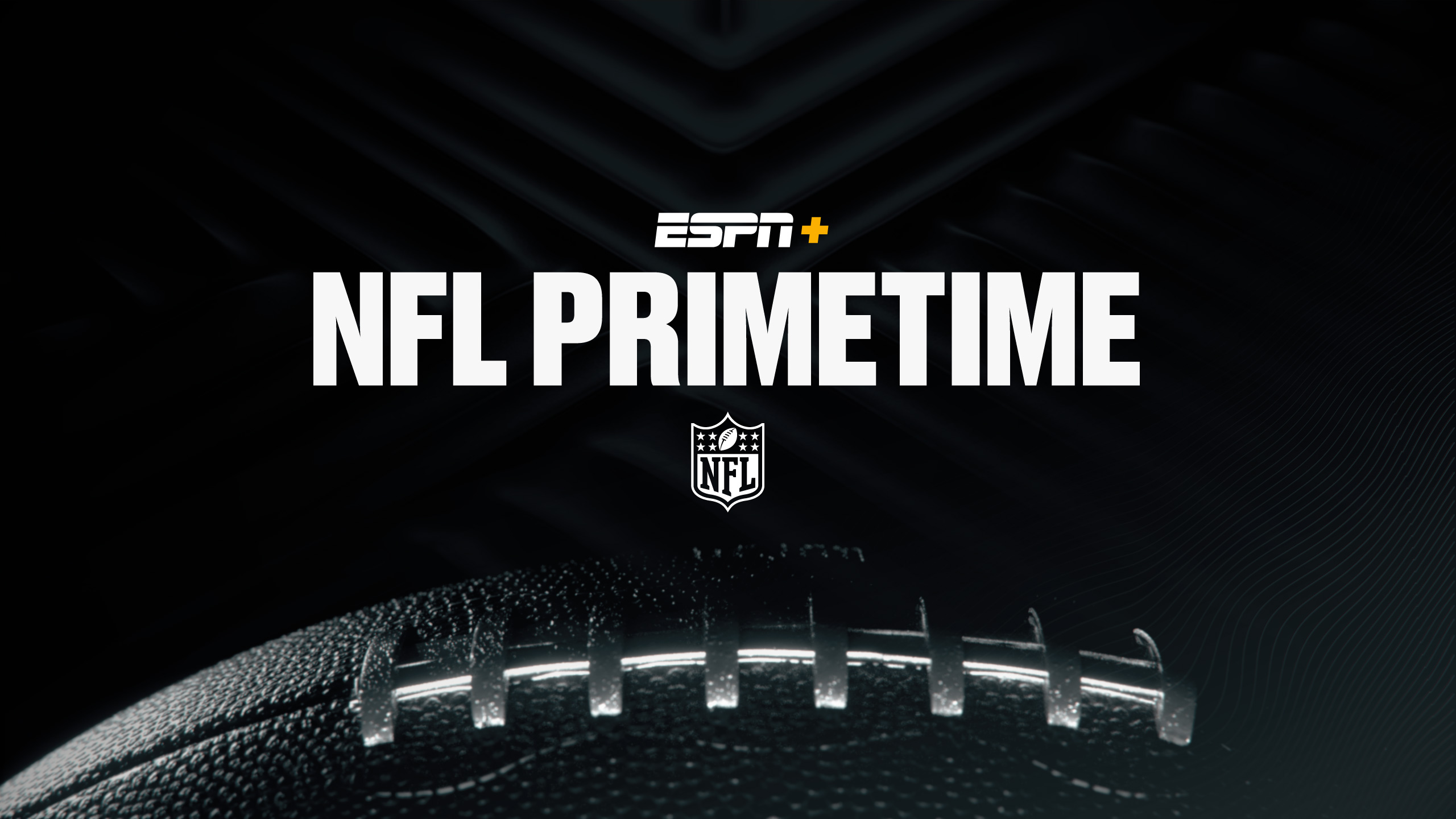
Chris Berman and Tom Jackson recap the weekend’s games with extended highlights and analysis.
The show will stream live at 7:30 p.m. ET each Sunday during the 2019 season and will be available on demand each week until late Wednesday night. Watch on ESPN+
The hope was that the return of Trubisky and Chicago’s bye week might help spur some life into a missing Bears offense. It didn’t happen. Matt Nagy either wasn’t confident in his running game or simply ignored it from the jump, as the Bears ran the ball a mere seven times. According to NFL Next Gen Stats, the Bears didn’t face a loaded box with eight or more defenders even once during the game, so it doesn’t appear that the Saints were selling out to stop the run and daring Trubisky to win the game. With the Bears averaging just over 3.1 yards per pass before the fourth quarter, it’s hardly as if they were succeeding in the air.
Nagy’s game management also was a mess. The Bears took over at their 17 with 1:14 left in the second quarter trailing 12-10, and the Saints were out of timeouts. They could have kneeled to get the ball to halftime. Chicago instead got stuck between two minds. It threw an incomplete pass on first down and then completed a pass for 5 yards on second down. With the clock moving, it moseyed up to the line in an attempt to seemingly run the clock down, only to snap the ball with 16 seconds left on the play clock and 38 seconds left in the half. Trubisky then seemed to look downfield before throwing the ball away when simply giving himself up would have ended the half. The Saints returned the ensuing unnecessary punt for a touchdown, although it was called back for a holding penalty.
Both Nagy and Trubisky were to blame for the breakdown at the end of the half, and while Nagy doesn’t seem to have answers for what plagues this offense, his quarterback simply isn’t playing well. Trubisky missed a number of easy throws in this game, and while some of that comes down to rust and playing through an injured non-throwing shoulder, he was struggling before the injury too. His accuracy on anything remotely down the field while the game was a contest was sporadic at best, and his average completion before the fourth quarter traveled just 3.4 yards in the air, which ranked 22nd among 23 quarterbacks. Trubisky also didn’t run once during the game, which has been missing from his repertoire all season and dramatically lowers both his floor and his ceiling.
0:52
Mitchell Trubisky says the Bears’ losses hurt because of the effort being put forth in practice.
Of course, it’s worth noting that Trubisky was playing stiff competition. As much credit as Sean Payton has received for winning five straight without Drew Brees — and as cool as that fullback option the Saints ran with Taysom Hill was — the defense has driven this winning streak.
Since Week 3, the Saints’ defense ranks third in win probability added, behind only the Patriots and 49ers. (They’re ninth in the same stat on offense.) Late, meaningless touchdowns like the ones Trubisky threw Sunday have inflated their statistics; through the first three quarters of games over the past five weeks, the Saints have allowed opposing teams to score just 1.1 points per drive, which is third in the NFL behind those same two defensive juggernauts.
When I wrote about the possibility of a Drew Brees decline before the season, I suggested that the Saints would likely be able to weather any drop-off from their quarterback with what might be a top-five defense. Going from Brees’ 2018 season to Teddy Bridgewater has been a step backward, but the Saints have thrived. Defensive coordinator Dennis Allen’s first run as a head coach didn’t go well, but he was also taking over a Raiders team that basically tanked its way out of a brutal cap hell for most of his tenure. On this form, Allen is going to get another chance soon.
![]()
The Bills return an onside kick for a touchdown
Sunday was a great day for weird moments in onside kicks. While the Bears recovered one, the Bills took things all the way in the opposite direction and returned Miami’s last-ditch effort to create a possession. Micah Hyde fielded the onside kick attempt with 1:38 left and took it straight to the house for a 45-yard touchdown, sealing a 31-21 Bills win.
The onside kick touchdown is pretty rare. As far as I can tell, this is just the sixth time a team has returned an onside kick for a score over the past 20 years, and the first time since Tyjuan Hagler did it under virtually identical circumstances for the Colts in 2010. Listen to the clip I linked and you’ll hear Indy’s radio announcers say, “You won’t see that very often!” Indeed, you didn’t see it in the NFL for nearly nine years.
![]()
Three receivers in the Super Bowl era have caught four or more touchdowns in multiple games. One is Jerry Rice. The second is Sterling Sharpe. One Hall of Famer and a guy who would be in the Hall of Fame if it weren’t for a career-ending neck injury. You can probably guess who the third is: Jones, who scored four touchdowns in a 49-9 Bengals win over the Jets in 2013 and then repeated the feat during Sunday’s 42-30 loss to the Vikings.
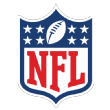 Everything you need this week:
Everything you need this week:
• Full schedule » | Standings »
• Depth charts for every team »
• Transactions and top news »
• Projected 2020 NFL draft order »
More NFL coverage »
As you might suspect, receivers don’t typically score four touchdowns in games their teams lose. Previously, receivers were a combined 34-3 in those four-plus touchdown games. Jones also became the first player in league history to score four receiving touchdowns in a game in which he didn’t rack up at least 100 receiving yards, as he caught 10 of his 13 targets for 93 yards. His scores came from 2, 3, 10 and 16 yards out.
The Vikings have pretty good cornerbacks, and Jones beat them all at different points Sunday. Mike Zimmer either didn’t have enough confidence in those corners to press Jones at the line or thought they would eventually get better, but Jones was repeatedly able to use his release to create throwing lanes for Matthew Stafford. On the third touchdown of the first half, he was able to shake Mike Hughes with his first step and establish inside leverage for what needed to be an instant throw with six seconds left on the clock.
The most flamboyant score of the day was against Trae Waynes, whom Jones beat with a spin move before turning upfield for the first touchdown. His two touchdowns against top corner Xavier Rhodes, meanwhile, were almost identical throws from Stafford on the near-hashmark. The first was a quick out, while the second and final touchdown of the day was a back-shoulder throw. Both throws rely on Stafford’s velocity and require him to place the ball in a spot where only Jones can catch it.
Sunday was a rough day for the Lions, as they lost the game to the Vikings while Kerryon Johnson, Damon Harrison and Darius Slay all left the game with injuries. Johnson and Slay were unable to return.
Detroit is on a three-game losing streak, but that has included a last-second loss to the Chiefs, a controversial 23-22 loss to the Packers and Sunday’s shootout loss to the Vikings. Matt Patricia’s team probably deserved to win at least one of those games. Instead, it is 2-3-1 and way back in the NFC North behind the 6-1 Packers. With the Giants, Raiders and Bears coming up, the Lions probably need to go on a winning streak to get back into playoff contention.
![]()
Kirk Cousins carries his team to victory
Three weeks ago, the knives were out for Cousins and his massive contract after a dismal performance in a 16-6 loss to the Bears. Adam Thielen complained about the offense. Stefon Diggs skipped practice. It seemed like the annual infighting about the run/pass ratio of the Vikings offense had begun.
Since then, Cousins has posted video-game numbers. The former Washington starter is completing more than 75% of his passes, averaging 10.8 yards per attempt, and has thrown 10 touchdowns against one pick, a pass that Diggs dropped. His passer rating over that time is a whopping 142.6, more than 27 points better than that of any other quarterback over the same time frame.
The Vikings typically want to win by playing great defense and running the football. They didn’t get much of the former Sunday, with Stafford throwing for 364 yards and four touchdowns. Dalvin Cook and the running game took the ball 37 times for 166 yards, but the passing offense drove this victory for the Vikings, and Cousins did it without having Thielen for most of the contest after his star wideout injured a hamstring on Cousins’ first touchdown of the day.
Cousins eventually finished 24-of-34 for 337 yards with four touchdowns and no picks. Beyond Thielen, the touchdown passes went to Kyle Rudolph, Bisi Johnson and C.J. Ham. Rudolph and Irv Smith Jr. became the first pair of tight ends to top 50 receiving yards in a game all season in a game where the Vikings were successful on 65% of their offensive plays out of 12 personnel, per NFL Next Gen Stats.
The best moment of the day for Cousins, though, wasn’t a touchdown pass. After a failed Lions two-point conversion left the game delicately poised at 35-30 with three minutes to go, the Vikings took over. Any fatalistic Vikings fan could figure how this was about to go. The Vikings would run the ball three times and punt the ball back to a white-hot Stafford, who would march down the field and hit Jones or Kenny Golladay for a touchdown to take the lead.
Instead, the Vikings trusted their star quarterback. After a first-down run and a Lions timeout, they went with play-action on second down and sent Diggs out on a deep post as the only receiver on the play. With Justin Coleman matched up in man coverage without safety help, Cousins lofted up a well-placed pass to Diggs, who turned back upfield for what eventually became a 66-yard gain. Cook scored two plays later to establish a two-score lead.
Play-action has been at the core of this Cousins run. Over the past three weeks, he leads the league in play-action attempts (41), passing yards (530) and passer rating (156.8), and is second in yards per attempt (12.9) behind Stafford. On Thursday, he gets a revenge game against a Washington defense that ranks 29th in the league in QBR allowed. Thielen might not be ready on a short week, but it probably won’t matter if we get this version of Cousins.
![]()
The Dolphins lead for more than 26 minutes
Across their first five losses, the Dolphins led for a grand total of three minutes and 47 seconds, all of which came against the Chargers in Week 4. As 17-point underdogs against the Bills in Buffalo, it’s fair to say that expectations were low for Brian Flores’ team. Even after first-round pick Christian Wilkins was ejected from the game, though, the Dolphins seemed close to pulling one of the biggest upsets of the year. They led for a total of 26 minutes and 34 seconds Sunday, including at halftime and for the entirety of the third quarter.
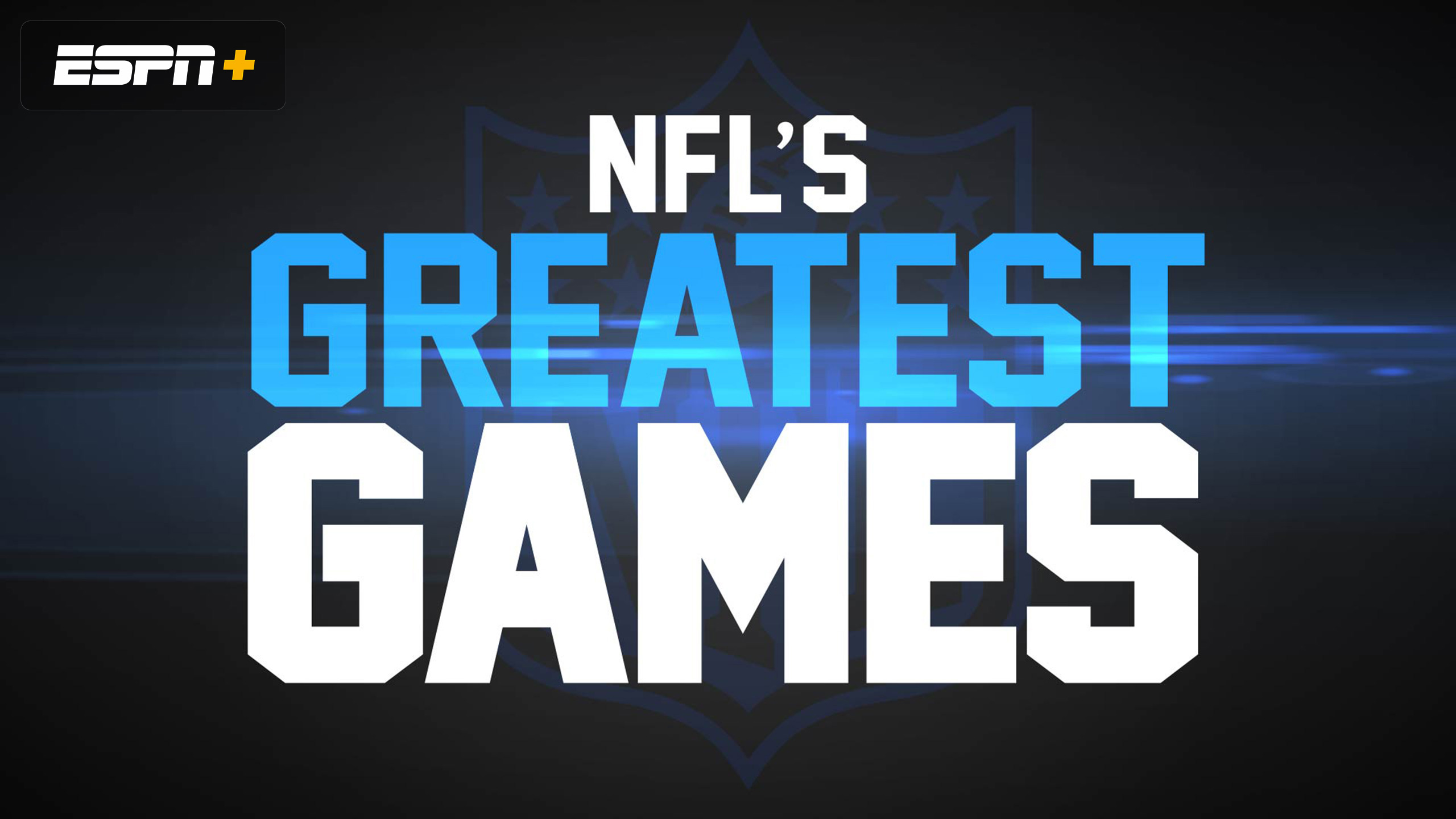
Relive some of the league’s most memorable games, from Super Bowl XLII to the 2018 AFC title game. Watch on ESPN+
The Dolphins might very well have won this game if it weren’t for the efforts of superstar Bills cornerback Tre’Davious White. With a 14-9 lead, the Dolphins drove to the Buffalo 2-yard line after a successful fake field goal and appeared on the verge of going up by more than one possession for the first time all season. On first-and-goal, the Dolphins simply failed to block nose tackle Jordan Phillips, who destroyed Ryan Fitzpatrick for a loss of 10 yards. (This isn’t new for the Dolphins.)
On the next play, Fitzpatrick tried to squeeze an out to Isaiah Ford, only to leave it narrowly inside; White picked it off. The Bills drove 98 yards to take back the lead, and after the two teams traded punts, White punched the ball out of Preston Williams’ hands to give the Bills’ offense a short field. The Bills scored three plays later to establish a 10-point lead.
This wasn’t a great performance from the Bills’ offense, which was booed off after failing to score a touchdown during the first half. Josh Allen was just 6-of-15 for 90 yards during that half, although the offense did string together that one long drive and took advantage of the short field after halftime. Allen was let down by drops from Dawson Knox and Cole Beasley on either side of the half, but the Dolphins showed some signs of life on defense, with Taco Charlton getting his third sack in four games since joining the team.
0:54
Josh Allen opens up about his friendship with Ryan Fitzpatrick, showing respect and gratitude toward the 15-year veteran.
Miami has certainly looked more competitive after the bye, although much of that last week revolved around the fact that it was playing Washington. It now has an 18.5% shot of finishing 0-16 per ESPN’s Football Power Index, which isn’t far off from its chances of failing to come away with the top pick in the 2020 draft, which stand at 24.3%.
Fitzpatrick nearly led the Dolphins to a comeback win against Washington and was a clear upgrade on Josh Rosen on Sunday, going 23-of-35 for 282 yards with a touchdown and that pick. He continued to show little regard for his own body by lowering his shoulder to take a goal-line hit on a 11-yard touchdown that brought the Dolphins within three before that onside kick, but this was generally a good game from the former Bills starter. It’s fair to wonder whether a team with hopes of contending will trade for Fitz as a backup or injury fill-in.
![]()
On a first-and-goal run from the 3-yard line with the Rams up 20-3 in the third quarter against the Falcons, it appeared that Todd Gurley crossed the plane. In lieu of challenging the call, the Rams chose to sneak Goff on second down. It appeared that he crossed the plane. The refs ruled him short. On third down, in lieu of taking another shot with the quarterback whom he would later describe as the worst sneaker in the history of football, Sean McVay asked Goff to roll out on third down. This happened:
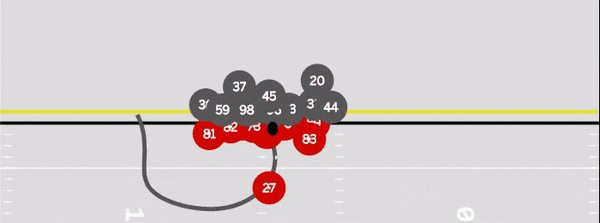
No. 45 is Jones, whom the Falcons signed to a four-year, $57 million contract this offseason. He is a good player, but it’s a sign of just how badly the rot has set in on this Falcons defense when Goff can shake him in the open field for a 1-yard score. This is the same defense that once shut down the Rams in Los Angeles during the 2017 playoffs.
Goff was certainly better after last Sunday’s disaster against the 49ers, going 22-of-37 for 268 yards with two touchdowns. Things were aided by a Falcons pass rush that failed to sack him and pressured him on just 10.8% of his dropbacks. It was Atlanta’s fourth consecutive game without a sack, which is only the sixth time a team has pulled that off since the sack became an official statistic. It has been more than a decade since the last instance.
No team has gone five games without a sack in the recorded history of the stat. Next week, the Falcons face Russell Wilson and the Seahawks. Mercedes-Benz Stadium didn’t look particularly full on Sunday, and this upcoming home game could feature Matt Schaub at quarterback in lieu of the injured Matt Ryan, who reportedly has a high ankle sprain. Normally, especially given what just happened to Patrick Mahomes, it would be logical for a 1-6 team to sit its star quarterback for a week in advance of its bye to rest his ankle. With Dan Quinn possibly coaching for his job next Sunday, I don’t think the Falcons will feel the same way.
![]()
![]()
All of the San Francisco-Washington game
Speaking of half-empty stadiums: if you sat in a driving rainstorm for three hours watching a 1-5 Washington team get shut out by the 49ers on Sunday, you’re a true fan. I’m not sure I’d read much at all into the statistics from Sunday, which was played on inches of standing water on the famously decrepit Washington field. Richard Sherman was on the field for the famously awful turf that took out both Chris Clemons and Robert Griffin in the 2012 playoff game between the Seahawks and Washington. Sherman likened Sunday’s field to “playing in a sand pit.”
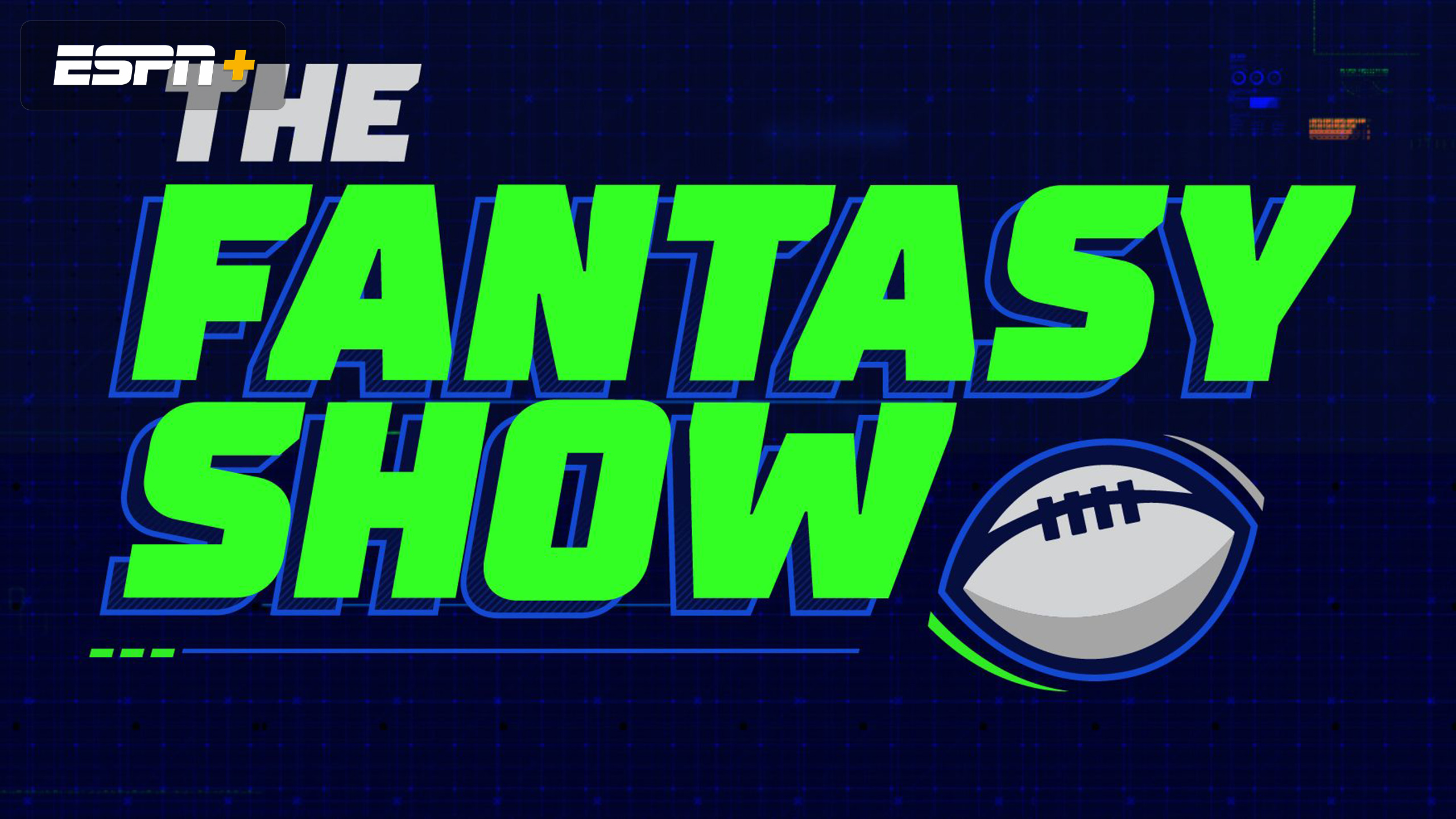
Embracing the fun spirit of fantasy sports, ESPN senior fantasy analyst Matthew Berry and his unconventional cast of characters aim to make fantasy football players smarter and help them win their leagues. Watch the latest episode
There’s not too much to take away from a game in which the field was this bad. No player had any confidence in their footing, with good reason. Just two players topped a max speed of 20 mph. Contrast that to last week, when 11 players in the 49ers-Rams game went over that 20 mph mark. This was one of those games that sounds fun during the offseason and isn’t actually any fun when there are other football options at the same time.
The one thing that did stand out as significant to me: I would have hoped to see a 49ers rushing attack that wants to be regarded as dominant blow up against a Washington defense that ranked 20th in rush defense DVOA heading into the week, but the Niners ran the ball 39 times for just 137 yards and seven first downs. They could muster only three field goals across four trips inside the red zone. It’s worth noting that the San Francisco running game has collapsed over the past two weeks with fullback Kyle Juszczyk and starting tackles Joe Staley and Mike McGlinchey all out injured, with the Niners running the ball 41 times for just 99 yards and eight first downs last week.
The Panthers are next on the docket for the now 6-0 Niners, and while Carolina’s pass defense has been impressive, its run defense is 29th in rush defense DVOA. If the running game doesn’t get going at home next week, the 49ers will have something to be concerned about, even at 6-0.
![]()
![]()
The Cardinals shut down a tight end
To say the Cardinals have had their issues covering tight ends this season would be generous. Through six games, they had allowed opposing tight ends to rack up a total of 102 fantasy points. To put that in context, the Buccaneers were the second-worst team in the league in terms of allowing fantasy points heading into Week 7, and they had allowed 68 fantasy points. The league average through six weeks was 41.6 points. Outside of one subpar game from Tyler Eifert, starting tight ends have ripped apart the Cardinals:
Top Tight Ends’ Stats vs. Arizona
For one, the Cardinals did give up a touchdown to a Giants tight end, but it wasn’t Engram; the Giants ran four verticals for Daniel Jones’ only touchdown pass of the day, a well-placed 28-yard throw to Rhett Ellison. Engram also dropped two of his five targets, including a pass that would have produced a 25-yard completion on his only downfield target of the day. He deserves some of the blame. The returning Patrick Peterson helped jar the ball out on that long would-be completion, and his presence certainly made it easier for the Cardinals in coverage, but it’s not as if Peterson was often directly covering Engram.
The Cardinals were able to control this game with pass pressure, with at least one snap I saw in which Jones was looking toward Engram but wasn’t able to get the ball out while under duress. Arizona ranked 15th in pressure rate heading into Week 7, but on Sunday, it led the league by pressuring Jones on 42.6% of his dropbacks. Arizona sacked Jones eight times and knocked him down on 12 of his 39 pass plays, with Chandler Jones’ four sacks leading the way. The Giants’ offensive line also committed four holding penalties.
0:26
Patrick Peterson gets a clear path to Daniel Jones and drills the Giants QB, forcing a fumble and setting up a Cardinals’ field goal.
Some of those pressures are on the offensive line. Others are on Jones. While the rookie’s coolness in the pocket can be a boon to his chances of finding receivers downfield, there have also been too many moments in which Jones’ internal clock fails him and he waits too long in the pocket. ESPN’s pass block win rate statistic tracks whether a team’s offensive line holds its blocks for 2.5 seconds, which is typically long enough for a quarterback to throw the ball. The Giants were at 61.5% Sunday; not great, but just ahead of the Colts, who only allowed one sack on 40 dropbacks. That’s just one example, but the line wasn’t the sole problem Sunday.
It has gone unnoticed or excused, but Jones has been dreadful since his dramatic victory over the Buccaneers. Over the past four games, he has completed an even 60% of his passes while averaging just 5.9 yards per attempt, with four touchdowns against seven interceptions. His interception Sunday was a horrific decision on a pass late into double coverage. He ranks 31st in passer rating over the past four weeks at 64.8, ahead of only Baker Mayfield and Josh Rosen.
Two ugly interceptions in a win over Washington in a 24-3 win were mostly ignored. Bad games against the Vikings and Patriots were chalked up to tough defenses and missing weapons. On Sunday, though, Jones was playing the league’s 30th-ranked defense by DVOA with Engram and Saquon Barkley returning to the lineup. This was supposed to be the game in which he reminded us of what he could do. Instead, he really wasn’t any better than Eli Manning short mobility. It’s way too early to draw any significant, long-term conclusions from Jones’ ugly month of football, but the honeymoon period afforded New York’s first-round pick is officially over.
![]()
![]()
Two instances of bullying
Just 24 hours after 5-foot-6 Astros infielder Jose Altuve hit a home run to send Houston back to the World Series, the NFL was big brothering its running backs on Sunday.
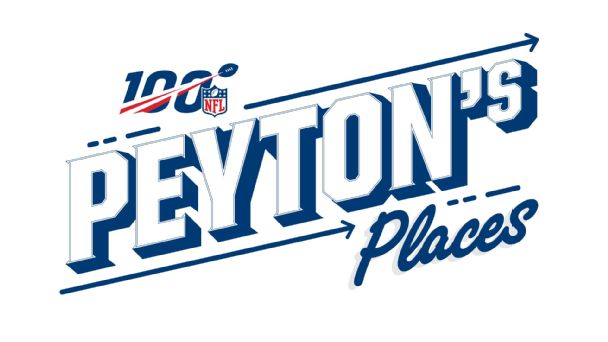
To celebrate 100 years of pro football, Peyton Manning travels the country to see the people and places that made the NFL the NFL.
Watch on ESPN+ » More »
First was the climax of the sudden fight between the Falcons and Rams in the third quarter. Devonta Freeman was understandably cranky amid a lost season, but things went about as poorly for him as possible. Not only was he ejected after throwing a punch, but the Falcons back was lifted off the ground and manhandled by Aaron Donald to end the altercation.
In the afternoon block, a similarly frustrated back found similarly frustrating results. With the Saints blowing out the Bears, Tarik Cohen was chirped at by Saints coach Sean Payton. The Saints’ defensive backs then pantomimed about the 5-foot-6 Cohen’s height as Cohen steamed on his way back to the huddle. Running backs have it hard these days. They deserve our support, regardless of size.
Credit: Source link